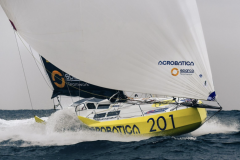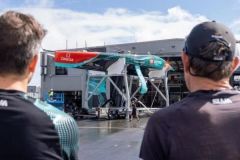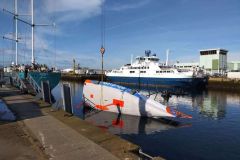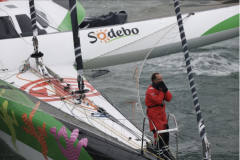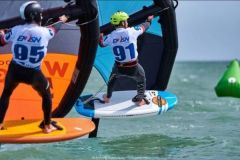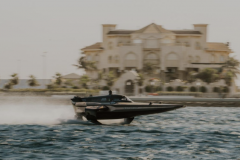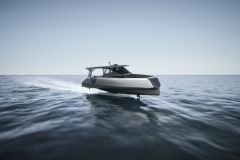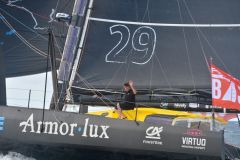Emirates Team New Zealand has just unveiled the future boat for the 36 e America's Cup. A monohull "illustrating a bold and modern vision for high-performance monohull racing yachts" claims the Kiwis.
A technological prowess
The AC75 is a real revolution! Even though we knew that the Kiwis were working on a monohull based on the know-how of Guillaume Verdier, the result is quite impressive! And the first thing that stands out is the absence of a keel!
The result is a dinghy hull (23 m long all the same!) which will have to be ultra light to fly at all speeds. A technological feat made possible thanks to the two inclined T-shaped foils, ballasted to obtain a righting moment when sailing and offering anti-roll stability when sailing at low speed. No one-design on the hull, which will be left free in terms of design. The foils, however, will probably be one-design. In fact, it is very likely that some "essential" parts will be one-designed and the way they are operated will be left to the discretion of each team.
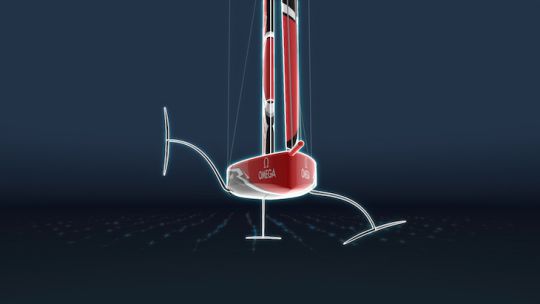
At hull level, even if the design is open, the yachts should be wide to provide shape stability (up to 15/20° of heel).
In "normal" sailing mode, the leeward foil is used to lift the boat and foil, when the windward foil is raised out of the water to maximize ballast leverage and reduce drag.
During pre-starts and during manoeuvres, both foils can be lowered to provide additional lift and roll control. A configuration that can also be useful in rougher sea conditions and provide a wider window of opportunity when racing.
While performance was the cornerstone of the development of the AC75, the design teams also looked at the practical aspects of storage in the hangar and at the port. For example, the two foils tilt under the hull, ensuring stability and reducing the boat's wingspan.
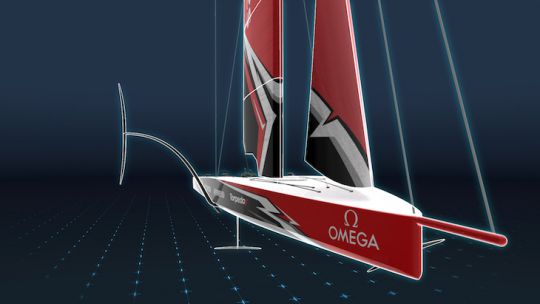
"The idea in developing this AC75 is to provide an affordable and sustainable technology that can be adapted to other boats and other classes." says the New Zealand team in its press release.
The AC75 will be equipped with a large wing, a solent and a code zero. Rigging studies are also underway to ensure that the system does not have to be installed and uninstalled every day.
"Our analysis of the performance of hydrofoil monohulls tells us that once the boat is up and running, it has the potential to be faster than an AC50 upwind and downwind", says Grant Dalton, CEO of Emirates Team New Zealand.
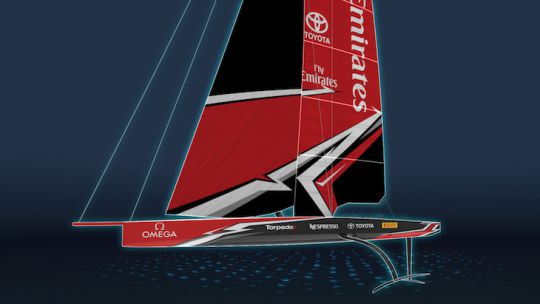
4 years to design a spectacular boat
To design this AC75 with foils and without keel, the teams of architects and engineers - including Frenchman Guillaume Verdier - spent 4 months reviewing a wide range of monohull concepts. " Our objectives were to design a class that was challenging and demanding in terms of navigation, requiring crews to have a high level of competence. This concept could become the future of monohulls for racing and even cruising, beyond serving as a support for the America's Cup" explains the New Zealand team in the press release.
Even if architecturally speaking the AC75 is feasible, it won't take too much more than four years to arrive at a ready-made boat. In particular, the teams will have to work hard on the weight target, which will have to be very light so that the monohull can take off in all weathers.
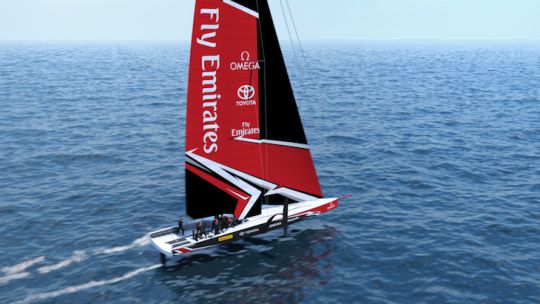
It is a huge technological and human challenge that requires as much technological prowess in architecture as in construction, but also in manoeuvring and crew training.
The competence of the crews will be a crucial point, as these boats will have to be manoeuvred without keel, with the only weight stability at low speed being the ballasted foils.
We bet that manoeuvring at low speeds will be scabrous, while high speeds (around 30 knots) will give rise to incredible tricks of style!




